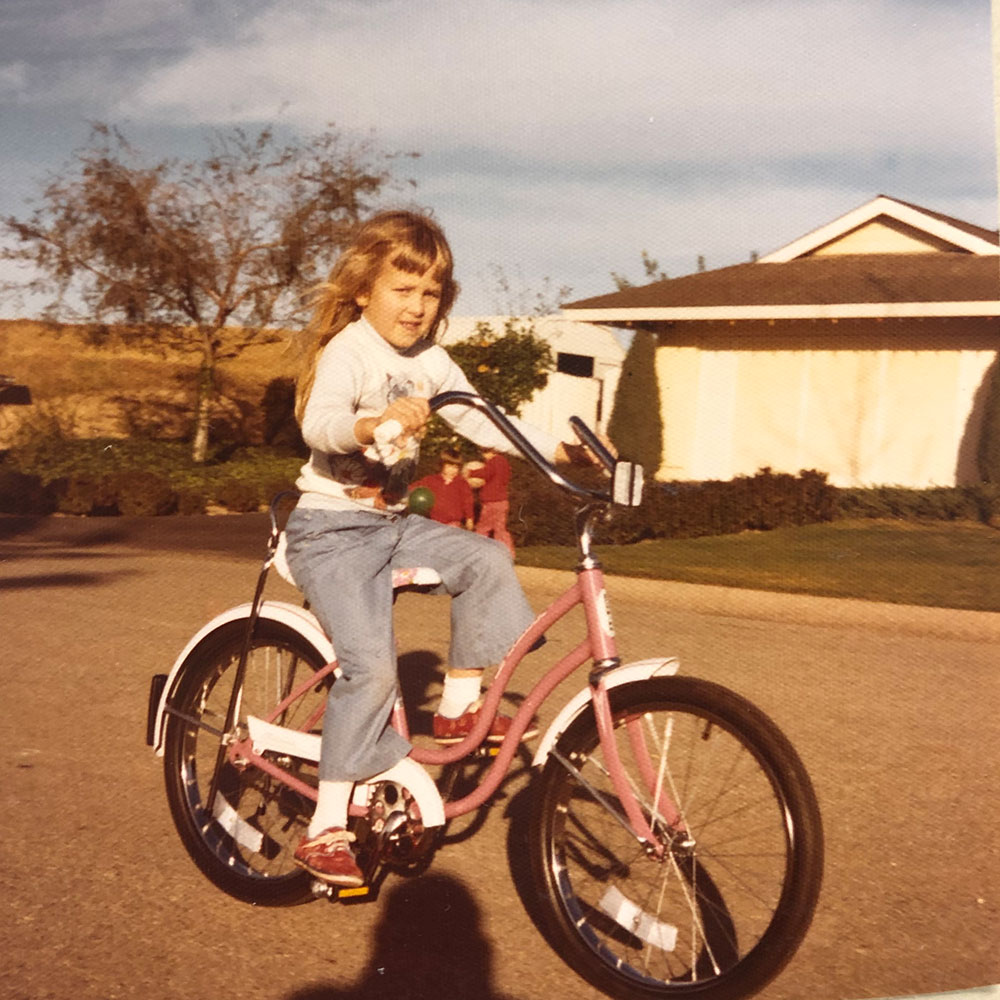
In November 2024, the Mountain Fire in Camarillo, California, nearly destroyed the house I grew up in.
That sentence still feels unreal to write. The neighborhood in which I spent the first 18 years of my life—the Las Posas Estates—was all but erased in a matter of hours. Somehow, my mother’s house, the one I was staying in at the time, was one of the few that remained. This is the story of that day—what I saw, what I felt, and what still lingers now, especially as an architect.
Camarillo, California: home
I grew up in a quiet neighborhood tucked into the agricultural hills of Ventura County—surrounded by strawberry fields, lemon groves, and 150-foot Canary Island pines. My parents bought the house in 1970, and I came home from the hospital to it exactly one year later. My sisters and I knew every corner of the neighborhood. We played in the streets, rode bikes, and climbed trees. It was a wonderful place to grow up.
My dad passed away in 2021, and my mom still lived in the house with her little Westie, Skye. In September 2024, Adam and I visited as part of a road trip. I didn’t know it then, but that visit was the calm before the storm—literally.
A stroke, a hospital, and the start of the winds
In late October 2024, my mom had a massive stroke that left her paralyzed on her left side. My sisters and I took turns flying down to help. When it was my turn, I arrived Monday night, November 4, and stayed alone in the house for the first time in my life—just the dog and me.
By Wednesday morning, the Santa Ana winds were howling—more intense than anything I remembered growing up. I moved the car out of the garage in case the power went out, walked the dog through the windblown streets, and worried about the five towering pines in the front yard. I even took videos, half laughing at how wild the gusts were.
Later that morning, I drove to the hospital in nearby Oxnard to help my mom and meet with social workers about her care.
That’s when things started to shift.
The first text
Around 10 a.m., I got a message from Joy, our longtime neighbor and honorary “fourth sister.” She had gone to pick up the dog because she felt bad Skye was home alone. She also mentioned a wildfire in Somis, five miles away.
At first, it didn’t seem urgent. Fires happen in Southern California. We all checked the Cal Fire website and shrugged it off. Even from Oxnard, I could see the air turning hazy, but I didn’t think much of it. An evacuation warning—not an order—was issued for the neighborhood, but it still felt distant.
Then, an hour later, my phone buzzed again. This time Joy wrote: “The fire is in the neighborhood and we are evacuating. I’m at your mom’s house, grabbing her wedding ring and dog food. I’ll be in touch soon.”
Panic and helplessness
I raced to the Cal Fire website. Full evacuation. The neighborhood was on fire.
Then came the worst moment: a text from Kelly, our neighbor across the street. She sent a screenshot from a news helicopter broadcast with the adjacent street name labeled. I could see the canopy of my mom’s giant pine trees—and nothing else but smoke and flame. Every visible house was on fire.
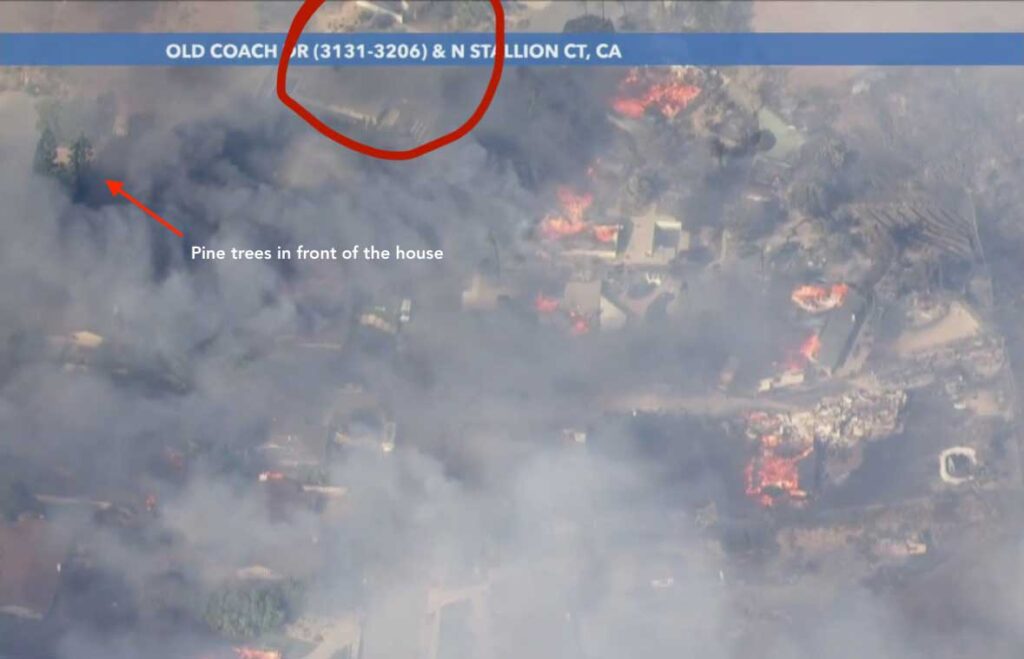
I stepped outside the hospital, into the smokey air, and called Adam. Then my sisters. I was sobbing, hyperventilating, panicking. No one could help. No one knew anything. The not-knowing was unbearable. Adam was equally helpless, back in Portland, glued to the live LA news feed as it panned through the neighborhood he’d come to know on our many visits home.
That afternoon, my sister’s husband called a childhood friend—Tony, now a fire captain stationed in Santa Maria. By an incredible coincidence, Tony was on our street—fighting the flames. He promised to check on the house.
At 5 p.m., he called back: the house was still standing. But it would be a long night.
Waiting in limbo
Kelly texted again around 7 p.m. She and her husband had snuck up to the neighborhood and seen the house—it was still there. Even the trash cans I’d set out that morning were standing, while all around the street, others had melted into blackened puddles.
Still, the fear wouldn’t let go. The news showed devastating footage of entire streets erased; I couldn’t look away, yet I couldn’t bring myself to look too closely either.
That evening, I sat with my mom in the hospital, pretending nothing was wrong, knowing I couldn’t tell her—not yet. I kept the TV off the live coverage, trying to shield her from images that I myself couldn’t unsee. Later, I picked up underwear and a phone charger at Walmart, checked into a hotel crowded with evacuees and their pets, and fell asleep in tears with her dog curled beside me.
The walk up the hill
The next morning, Joy and I went to see for ourselves.
As we climbed the hill, the scale of the destruction came into focus—house after house reduced to rubble, some foundations still smoldering, entire streets erased in a matter of hours. And yet, against all odds, my mom’s house was still standing. So were Joy’s and Kelly’s. Incredibly, nine homes at the end of the street had survived, surrounded on every side by ash.
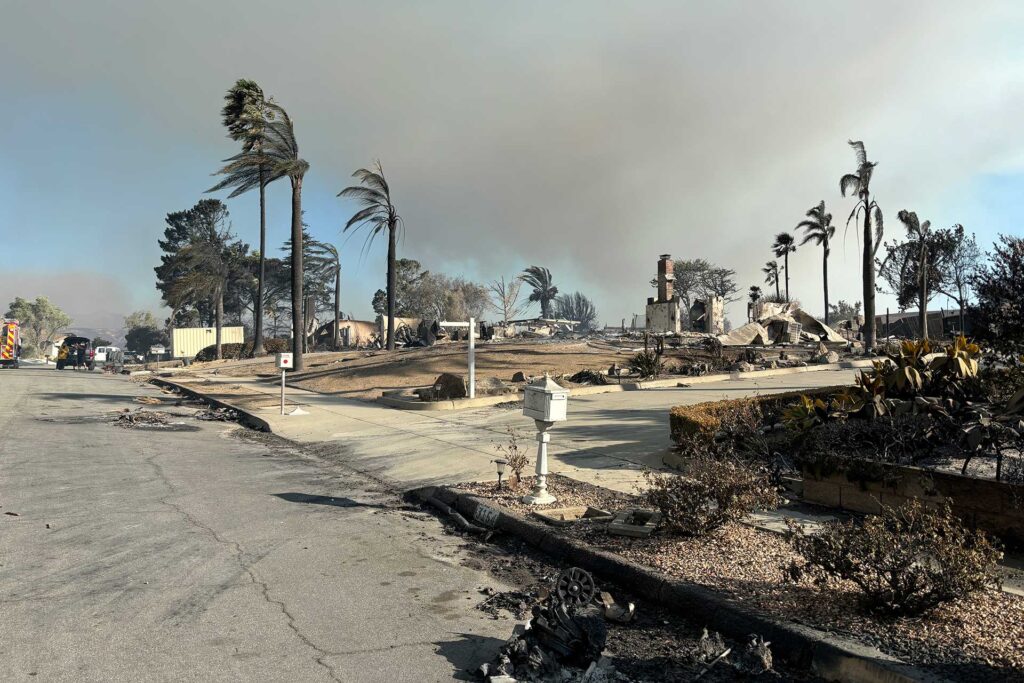
At my mom’s house, the signs of how close it had come were everywhere. The landscaping around the mailbox was scorched. Melted irrigation lines snaked across the ground, and the concrete block fence was streaked with burn marks. Even the patio cushions under the rear cover, just feet from the house, were singed.
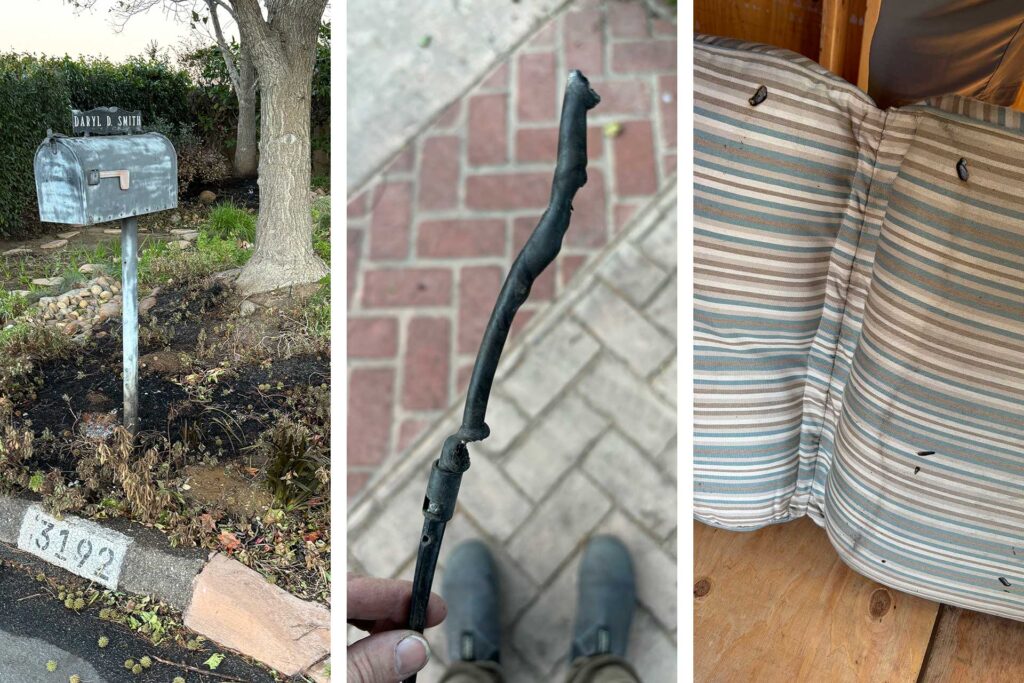
And then, in sharp contrast, the synthetic lawn in front of her house lay bright green under a still blue sky. The effect was disorienting, almost impossible to process.
Inside, I moved slowly from room to room, pressing my face into towels and upholstery, bracing for the acrid smell of smoke. But there was nothing—not a trace. After everything outside, the untouched interior felt unreal, as if the fire had skipped over the house entirely.
Gratitude and guilt
Neighbors who had lost everything came by, asking if we would rent the house to them. They just wanted to stay close. But it was filled with 54 years of belongings, and we were still figuring out what came next for my mom.
Skye and I stayed in the hotel for another three nights, since the neighborhood had no power, no gas, and the water was deemed unsafe even for bathing. Up on the hill, it was eerily quiet—dark streets lined with burned foundations and the low hum of generators. The sheriff’s department had locked down the area, checking IDs at every entry to keep looters out.
The Red Cross set up in the middle of the devastation, handing out bottled water, gloves, masks, and shovels. Their presence was a lifeline and a reminder that recovery had already begun. After four days, once power and clean water were finally restored, my sisters arrived and we all stayed in the house, cleaning and trying to figure out what came next for our mom.
Over the next week, I scrubbed every surface, even though it didn’t smell like smoke. My brother-in-law Clint and I cleaned up the yard. We found embers that had landed just feet from the house. Even months later, I still find the stark contrast between devastation and normalcy shocking.
Eventually, we moved my mom to an excellent rehab facility in Nevada and rented the house to a family from the neighborhood who had lost theirs.
A quiet realization
One hundred eighty homes were lost in Camarillo that day—not a single life. That fact is hard to believe and harder to process.
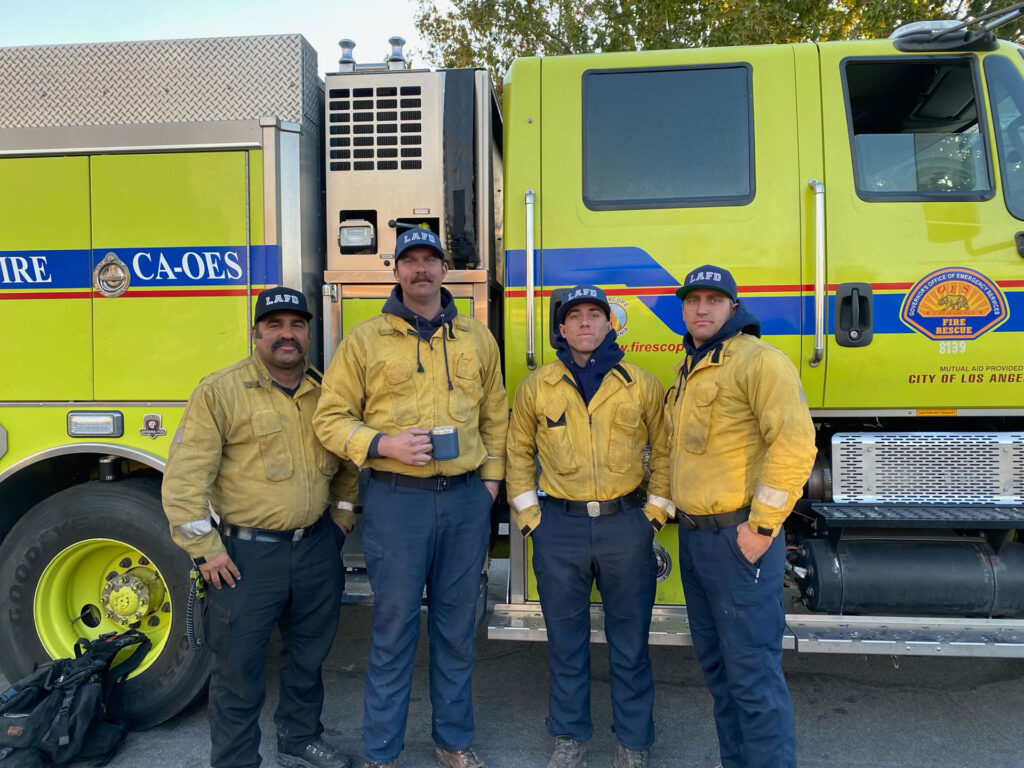
I don’t know why our house was spared. I can point to the metal roof, the concrete fence, the synthetic lawn, the sealed eaves, and the wind direction. But even with all those things, it still feels like a miracle. Or maybe just luck. Or maybe both.
As an architect, I can’t unsee what I saw and can’t unfeel what I felt. Those memories have changed how I think about fire—what we design for, what we assume, and what we overlook.
